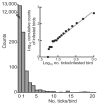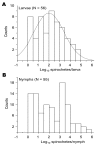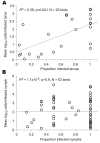Migratory passerine birds as reservoirs of Lyme borreliosis in Europe
- PMID: 16836825
- PMCID: PMC3291064
- DOI: 10.3201/eid1207.060127
Migratory passerine birds as reservoirs of Lyme borreliosis in Europe
Erratum in
- Emerg Infect Dis. 2006 Aug;12(8):1307
Abstract
To define the role of birds as reservoirs and disseminators of Borrelia spirochetes, we characterized tick infestation and reservoir competence of migratory passerine birds in Sweden. A total of 1,120 immature Ixodes ricinus ticks were removed from 13,260 birds and assayed by quantitative polymerase chain reaction (PCR) for Borrelia, followed by DNA sequencing for species and genotype identification. Distributions of ticks on birds were aggregated, presumably because of varying encounters with ticks along migratory routes. Lyme borreliosis spirochetes were detected in 160 (1.4%) ticks. Borrelia garinii was the most common species in PCR-positive samples and included genotypes associated with human infections. Infestation prevalence with infected ticks was 5 times greater among ground-foraging birds than other bird species, but the 2 groups were equally competent in transmitting Borrelia. Migratory passerine birds host epidemiologically important vector ticks and Borrelia species and vary in effectiveness as reservoirs on the basis of their feeding behavior.
Figures





